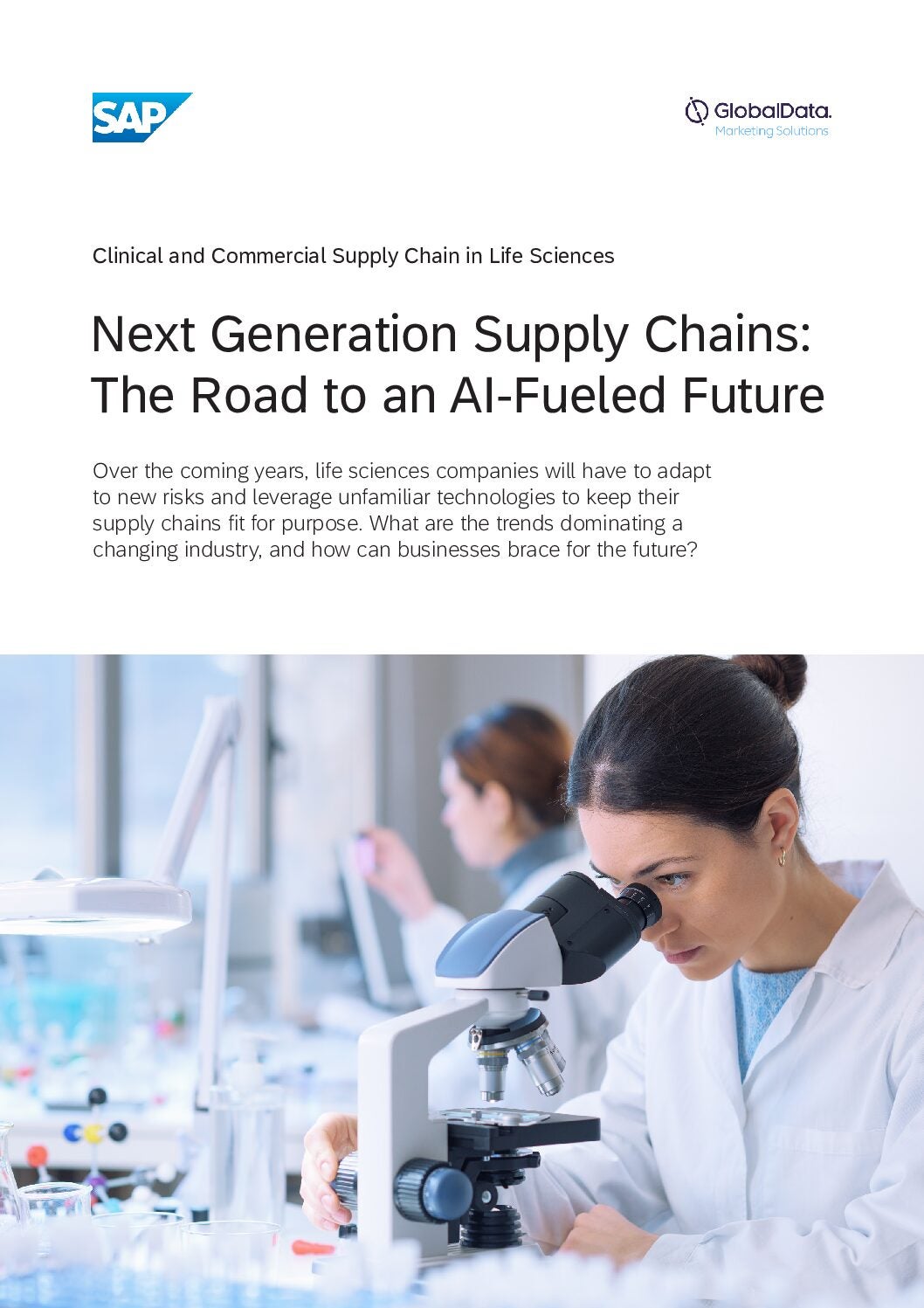
Pharmaceutical supply chains are some of the world’s most intricate. Recent developments have only heightened the challenges for companies on the receiving end of them. And these challenges are evolving all the time.
A bright future beckons for firms that can ride out market turbulence. Many areas of the pharmaceutical industry are poised for significant growth. The cell and gene therapy (CGT) market is expected to expand at a rapid pace, with a projected compound annual growth rate (CAGR) of 45.3% in the run-up to 2030. By the end of the decade, its value will reach $76 billion, driven primarily by oncology treatments. The growing prominence of precision medicine is another key trend. This approach, already standard for several cancers like melanoma, breast cancer, and non-small cell lung cancer, is rapidly expanding to other conditions such as colorectal and thyroid cancer. The FDA’s assent for new diagnostic tools and treatments in 2023 suggests individualized medical solutions will become widespread over the coming years.
With opportunities come challenges
Clinical trial organizers and biomanufacturers, however, face headwinds. According to Global Data analysis, supply chain disruptions emerged as a top concern for pharmaceutical executives in the first quarter of 2024, the period for which data is most recently available. Fueled by geopolitical tensions and economic uncertainty, fears around supply chain viability now outstrip even concerns around competitive pressures for business decision-makers in the industry.
Against this backdrop of uncertainty, novel therapies are taking the pharmaceutical world into complex and unchartered territory. This is particularly true for supply chains.
Consider the traditional pharmaceutical manufacturing approach. Reliance on standardized chemical ingredients and processes leads to relatively predictable outcomes. Cell and gene therapy and individualized therapies, however, begin with biologic starting materials sourced directly from patients. Life science companies must establish new processes, new organizational structures, and new supply partnerships to manage this make-to-order workflow. Unlike the predictable outcomes seen in chemical manufacturing, working with biological starting materials introduces variability. Despite identical procedures, outcomes can differ significantly, demanding substantially more rigorous quality control and process validation.
And once the therapies are developed, their sensitivity to time and temperature introduces further challenges. Many cell and gene therapies have extremely short half-lives and require ultra-cold storage conditions. Seamless, highly robust cold chain infrastructure is indispensable. Contingency workflows become critical, as any deviation in temperature can compromise the therapy’s effectiveness or put patients in danger.
Maintaining the integrity of advanced therapies, particularly those based on patient-derived materials, is critical and complex. They must abide by stringent standards like maintaining the chain of custody and identity from clinic to manufacturing site and back. Ensuring compliance with good manufacturing practice controls throughout this journey is non-negotiable. Any error can have serious implications for both patient safety and the therapy’s efficacy. Each product thus demands a tailored approach. Specific requirements related to shelf life, packaging, and temperature management must be rigorously addressed to preserve the therapy’s viability and therapeutic potential. Processes will need to transform as a result.
The pharmaceutical sector finds itself balancing the need to navigate rapid industry evolution while simultaneously pursuing cutting-edge therapeutic advancements. Getting to grips with the key components of this evolution is critical. And supply chain optimization underscores them all as a bridge to the future.
The wider context
Against a backdrop of supply chain shifts, a number of other key trends are set to shape the future of pharmaceuticals. Industry leaders must be aware of what these are, and the interplay between them, if they are to build bridges to the future.
One is sustainability. Recent analysis from Pharmaceutical Technology of major pharmaceutical and biotechnology companies revealed that the industry’s top 32 firms by revenue have pledged to cut emissions by nearly 46% over the next 12 years – slightly ahead of large corporations in other advanced industries. However, greenhouse gas emissions intensity remains high, even compared to other fossil fuel-intensive sectors like automotive and construction. And waste is a major concern in a sector where single-use products and packaging are widespread. While many pharmaceutical companies have focused on reducing emissions from direct operations (Scope 1) and purchased energy (Scope 2), addressing the wider network of indirect emissions – such as transportation and supply chain logistics (Scope 3) – remains a more significant challenge. Many national governments are setting their own ambitious targets around decarbonization and waste. The sooner pharma firms can get to grips with these issues, the better; increasing supply chain visibility to focus on weak spots is critical.
Transforming regulatory frameworks is another major trend pharma firms need to stay abreast of. The rise of CGT and individualized medicines is precipitating a rethink in how new therapies are regulated. Traditional models, designed for mass-produced treatments, are being reimagined to accommodate the tailored nature of CGTs and other novel treatments. Bodies like the USA’s FDA and EMA in Europe have had to create new pathways to assess the safety and efficacy of personalized treatments. This intricate process requires extensive data generation, robust clinical trials, and compliance with stringent privacy regulations, such as HIPAA and GDPR, to protect sensitive patient information.
Little wonder the pharmaceutical supply chain is evolving toward greater integration and collaboration. Improving resilience is essential for meeting sustainability goals and ensuring advanced therapies can meet robust regulatory criteria. To streamline operations, companies are increasingly leveraging integrated platforms that enable collaboration across the entire value chain – from R&D to distribution. By unifying supply chain planning, improving inventory visibility, and automating key functions, pharmaceutical firms can reduce costs, shorten product development cycles, identify emissions hotspots, and minimize disruptions. Enhanced collaboration between suppliers, manufacturers, and logistics providers is essential for improving agility – especially in the face of global supply chain volatility.
Preparing for tomorrow, today
The pharmaceutical landscape’s rapid evolution is a many-headed beast. Pressed by imperatives to create supply chains that are fit for purpose, meet regulatory stipulations, and hit sustainability goals, biomanufacturers must adapt swiftly. A suite of advanced solutions is hitting the market to help companies futureproof their operations.
For those yet to roll out novel solutions and strategies, what should they do? As the industry shifts towards more advanced treatments, those leading the charge must prioritize flexibility, real-time decision-making, and end-to-end visibility across the supply chain. Clinical trials increasingly involve adaptive protocols and require swift adjustments based on dynamically changing factors like enrolment rates. Firms need to adopt systems that integrate trial data directly into supply chain planning and combine studies and protocols where needed, enabling accurate demand forecasting and minimizing the risk of either shortages or overproduction.
As advanced therapies – and their myriad individualized needs – build momentum, biomanufacturers also require digital-forward solutions that streamline operations and enable efficient collaboration with stakeholders spanning the entire supply chain. This approach reduces manual dependencies ̶ allowing companies to quickly scale processes and reduce lead times for vital tasks like biospecimen collection, manufacturing scheduling, and delivery logistics. Doing so holds the key to getting CGT medicines to patients safely, quickly, and sustainably.
SAP Intelligent Clinical Supply Management and SAP Cell and Gene Therapy Orchestration solutions are two outstanding examples. They provide life science firms with indispensable tools to optimize their supply chains today and futureproof them for tomorrow. SAP Intelligent Clinical Supply Management simplifies the management of clinical supplies by leveraging SAP CloudERP, offering real-time insights, end-to-end visibility, and improved collaboration. It integrates clinical trial parameters directly into supply chain planning and clinical trial management, enabling biomanufacturers to forecast demand accurately and minimize waste. By connecting clinical sponsors and their contract manufacturer organizations (CMOs) seamlessly over SAP’s Business Network platform, it allows them to exchange drug and protocol information, as well as execute depot and site shipments, via 3 PLs. Additionally, process automation means the solution reduces manual errors while supporting a wide variety of complex trial designs.
SAP Cell and Gene Therapy Orchestration solution handles the complexity of the supply chain management for cell and gene therapies, addressing their unique, specialized requirements. It offers end-to-end visibility and efficient digital order management, ensuring the right patients receive the right treatments. With the solution, SAP customer analysis shows that the solution can reduce order fulfilment lead times by up to 60% by efficiently orchestrating crucial logistical tasks such as biospecimen pickup, external and internal manufacturing activities, and required courier services booking.
The pharmaceutical industry is only going to become more personalized – and supply chains will only become more complex. SAP offerings in clinical and cell and gene therapy supply chain are helping clinical trial organizers and biomanufacturers adapt. Download the whitepaper on this page to find out more.



